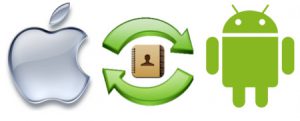 Migration to another mobile platform (operating system) can be due to a variety of reasons. For some, this may be due to a work necessity or professional activity. Some can use a smartphone on another OS as a backup mobile phone. Or you just feel like trying something new.
Migration to another mobile platform (operating system) can be due to a variety of reasons. For some, this may be due to a work necessity or professional activity. Some can use a smartphone on another OS as a backup mobile phone. Or you just feel like trying something new.
How to transfer contacts from one platform to another
The migration process to another platform, as a rule, involves not only changing devices, but also transferring personal data. In particular, telephone numbers. Due to the differences between the operating systems (Android and iOS), there may be some difficulties at this stage. The guidelines provided in this article will greatly simplify the task. At a minimum, users won't have to manually rewrite all their numbers.

to the content
Transferring contacts from iPhone to iPhone
Synchronization via iCloud. The easiest and fastest option is to use sync with cloud storage from Apple. To do this, you need to activate synchronization in the settings iPhone, from which you want to transfer contacts. User action:
- Open the 'Passwords and accounts' section in the settings menu.
- Select 'iCloud'.
- Move the 'Contacts' slider to the active position.
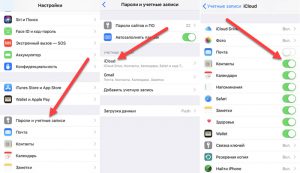
After that, it remains to go to the 'Backup' subsection and start the process of creating a copy by selecting the appropriate item.
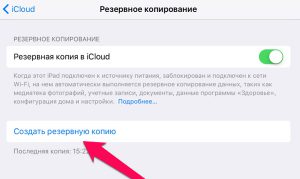
With an active Internet connection, the contacts will be copied to the Iclaud server, to the user's personal online storage.
The next step is to perform similar actions on the new iPhone (connecting to the Internet, signing in to your iCloud account, and activating contact sync). The main condition is that you must use the same ID Apple ID to sign in to iCloud as on your old device. Within a few minutes, the numbers saved in the cloud will automatically appear in the new phonebook iPhone.
Export via the web version of the cloud storage. This method is useful when you need to transfer contacts to your iPhone using a different iCloud account. The user will need:
- Log in to icloud.com using a computer browser.
- In the main window, click on the 'Contacts' icon.
- Find the gear in the left corner, click on it and select the 'Export vCard' item.

Just before export, you can mark the necessary contacts, or click 'Select all'.
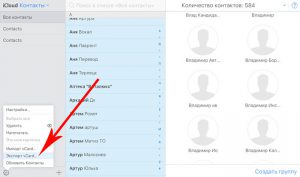
As a result, a vCard file with the .VCF extension will be downloaded to the PC, containing all contacts from the first device.
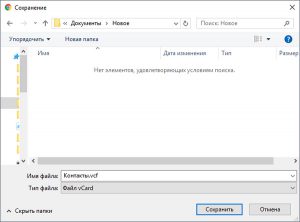
Next, you need to switch to another iCloud account (the one that will be used on the new device), and import the file downloaded to your PC in the 'Contacts' section. The numbers will be displayed on the new iPhone immediately after synchronization.
If an error occurs during the operation, it indicates that the vCard is oversized. Fortunately, there is a workaround: you can send this file in any convenient way to the iPhone, where you want to copy contacts. For example, via the Telegram messenger.

Then it remains to open the received vCard on a new one iPhone, click 'Share' and select 'Copy to Contacts' from the options offered.
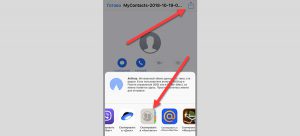
Unloading .VCF file via application. In case a computer is not at hand, third-party developers have come up with an alternative method to extract the vCard. This is the MyContactsBackup application. After installation from the AppStore, the user needs to launch the application and tap on the 'Backup' button.
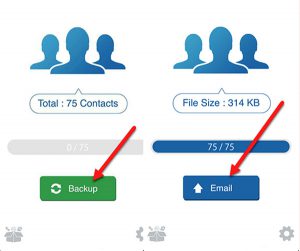
The process of creating a backup of your contacts will start. You can send the created .VCF file to a new smartphone via Email, using the functionality built into the program.
to the content
Transfer contacts from iPhone to Android
Synchronization via Google account. Devices running the OS Android use a cloud service from Google to store backups. However, users iOS can create a Google account and sync it with some applications Apple. To do this, you need to open the settings on the iPhone and follow these steps:
- Select the section 'Mail, Contacts, Calendars' or 'Accounts and Passwords' (depending on the OS version);
- Click on 'Add account' and select Google from the list of services;
- Log in by entering credentials from your Google account;
- Enable syncing of contacts using the slider.
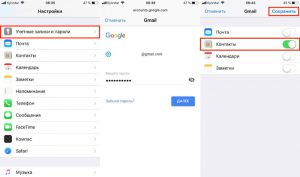
Now there is little to do – to do almost everything the same, only this time on an Android smartphone.
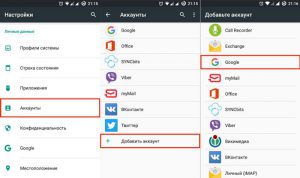
After passing the authorization, you need to make sure that the 'Contacts' item is active in the 'Synchronization' section.

Alternatives. If for some reason the method with adding a Google account to iPhone is not suitable for the user, you can apply the methods that were already discussed a little earlier in this material:
- Get a vCard through the web version of the iCloud service;
- Export the contents of the phonebook to a .VCF file via the MyContactsBackup application.
Regardless of the method chosen, the resulting file should be sent to your Android smartphone and opened through the explorer to start the process of extracting numbers into the phone book.
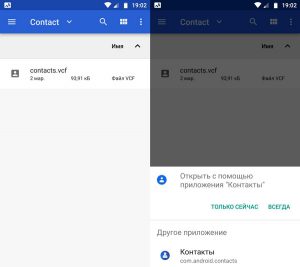
to the content
Transfer contacts from Android to other smartphones
Note: The information is equally applicable for transferring contacts to mobile devices managed by Android and iOS.
The Android OS provides the ability to directly export all contacts through the phonebook interface, without the need for a computer or additional software. To complete the transfer of all numbers, you must:
- Open 'Contacts' on your Android smartphone, find the options menu and go to the 'Settings' section;
- In the subsection “Manage contacts” select the item “Export contacts”;
- Tap on the phrase 'Export to VCF file and select a location to save the contacts.vcf file.
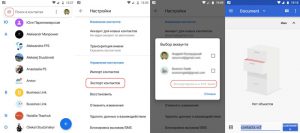
To transfer the received export file, you need to find it in the file manager and click 'Share', choosing the transfer method to another device (by Bluetooth, via messenger or e-mail).
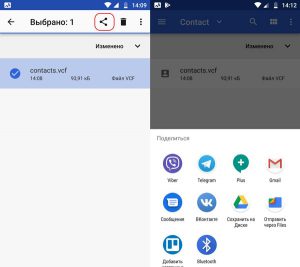
The only thing left to do is to download and open the resulting file on a smartphone iOS / Android, after which the system itself will offer to import contacts.
All other options (including using a PC, syncing via Google and iCloud) will take more time from the user than a live transfer.
to the content
How to transfer contacts to a SIM card
Note: if a contact contains additional information (for example, a second number), this information will be lost when transferred to SIM. Missing data will have to be transferred manually.
iOS. The mobile operating system from Apple lacks a function that allows direct export of contacts to a SIM card. However, this can be done using third-party tools. On iPhone, the SIManager utility will cope with the jailbreak.
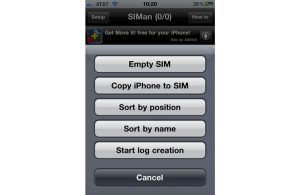
For users who do not want to risk the security of their device by hacking, there are other 'workarounds' that will need to be used. Procedure:
- Transfer contacts from iPhone to a phone from another OS using any method described in this article;
- Remove the SIM card from your iPhone and insert it into the phone to which the contacts were previously copied;
- Copy contacts to a SIM card using the standard functionality of a third-party phone.
Android. This is somewhat easier on Google's OS. Export of contacts to SIM is carried out through a special section in the settings of the standard phone book.

However, some newer devices may not have this feature. In this case, the SIM Contacts Manager application will help you copy contacts to the SIM (it functions without the need for Root rights).
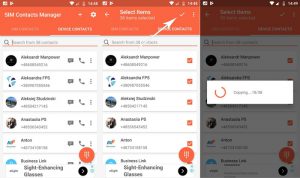
On the 'Device Contacts' tab, the user needs to mark the contacts, then click the checkmark at the top of the application. The selected contacts will be copied to the SIM card and displayed on the 'SIM Contacts' tab.
